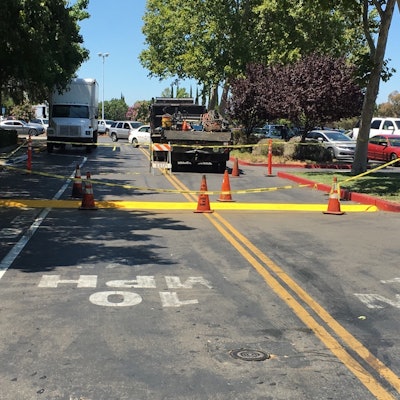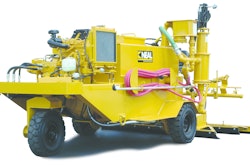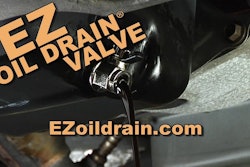
As paving and pavement maintenance contractors, constructing speed bumps is a skill your crew should know and master.
Generally, speedbumps are installed in a parking lot to slow drivers down and protect pedestrians. If possible, speedbumps should be installed between islands so that cars cannot drive around them.
While you may think installing a speed bump is the same as your typical parking lot paving job, there are differences you should take into account before accepting the bid.
“In my opinion installing speed bumps is somewhat different than typical paving,” Rodney Stanley Jr. with G.S. Paving Inc. says. “When a contractor paves there is a sub-grade (dirt), then base rock and asphalt on top. When speed bumps are being installed, they are overlayed on existing asphalt and bonded to it with tack oil.”
Stanley and his crew install between 15-20 speed bumps per season, depending on demand. They begin each speed bump job by having a safety meeting to get his crew all on the same page and ensure they are all wearing the proper personal protective equipment. They then caution off the area they are doing the work to make sure vehicles and pedestrians have a detour around the job site.
The crew cleans the area, either blowing off debris or sweeping depending on how dirty it is.
“Then we mark out our dimensions, (depending how wide the customer wants the speed bumps, usually 2-ft wide is minimum), so we measure and chalk line out the bumpers,” he says.
Next, the existing asphalt is keyed. To do this, Stanley recommends a notch is made about 2-in. wide all the way around the perimeter of the bump so the speed bump mass has something to tie into the drive surface and won’t get displaced by things like plows.
“Once the lines are chalked and the area is notched, we fill the inside of the bumper we marked with ss1 tack oil (bonding between existing asphalt) so the asphalt stays in place.”
The asphalt is then poured into a wheelbarrow for easy transport from the truck, then dumped onto marked areas as needed. Once the asphalt is dumped, one of crew members spreads the asphalt as another crew member uses a rake to form the speed bump.
While the raker forms the bump, another crew member is sweeping the loose asphalt away from the area while a final fourth crew member uses a vibratory plate to pound the edge of the bump, then up and over the bump.
“When compacting, the crew member is making sure everything is set correctly,” Stanley says. “We want to make sure there are, no rock pockets (rocks showing/no fines in mix) and taking out lines.”
Stanley says his crew then cleans the area and makes a plan to return in 30 days.
“We wait 30 days to come back and put a sealcoat and stripe on the bump to give the asphalt time to heal,” Stanley says.
Each speed bump takes between half a ton to 1 ton of asphalt, depending on the condition of the existing asphalt.
Stanley notes that if the existing asphalt is up and down or alligatored, they fix the area first, then overlay with speed bump. “If the area is really uneven we do 2 lifts of asphalt,” he says.











![Lee Boy Facility 2025 17 Use[16]](https://img.forconstructionpros.com/mindful/acbm/workspaces/default/uploads/2025/09/leeboy-facility-2025-17-use16.AbONDzEzbV.jpg?ar=16%3A9&auto=format%2Ccompress&fit=crop&h=135&q=70&w=240)








